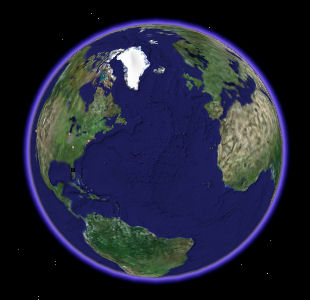An updated Google Earth changes the learning game

If Google Earth had been around when I was a kid, I might have done better in science, geography or even history classes. The Web app - which released version 5.0 this morning - is an explorer's oasis. (Believe me. I got lost in the app this morning, not realizing that I'd been exploring for more than an hour.)
I have to admit that I haven't really spent much quality time with Google Earth since its launch in 2005. Oh sure, I flew around the globe a few times, popping in on Paris, New York, London and even the remote Seychelle Islands off the coast of Africa. (We have some friends from there. Fascinating place.) But after that, I never really went back to it.
But with the upgrades from version 5.0, the app has hit primetime as a learning and discovery tool - especially now that the depths of the oceans have been added. Yes, you can now "dive" under the surface - without scuba gear - and explore on your own or with a tour guide courtesy of images and web clips from National Geographic, Discovery, Cousteau Ocean World and others.
The new version also includes historical imagery, which means you can go back and time to see how some regions have developed over time - things like farmland becoming office buildings or homes being cleared for highways over the years. There's also a new feature that allows users to take a virtual tour of Mars with NASA, though I couldn't find that feature in my installed copy. Finally, the kicker is the touring feature, which allows to create a recording as you navigate through Google Earth and add in a voiceover narration. (Check out Google's demo video.)
This version of Google Earth changes the way I feel about it. I would love for my kids to come home one day and talk about how they learned something about marine life in the Indian Ocean or earthquakes in California by using Google Earth in the classroom. My 10-year-old son has been asking questions about the earth's rotation with the sun. Using the historical imagery, I plan to zoom out on the planet tonight and start the clock so he can see how it really works.
Google Earth can probably explain it better than I ever could.
